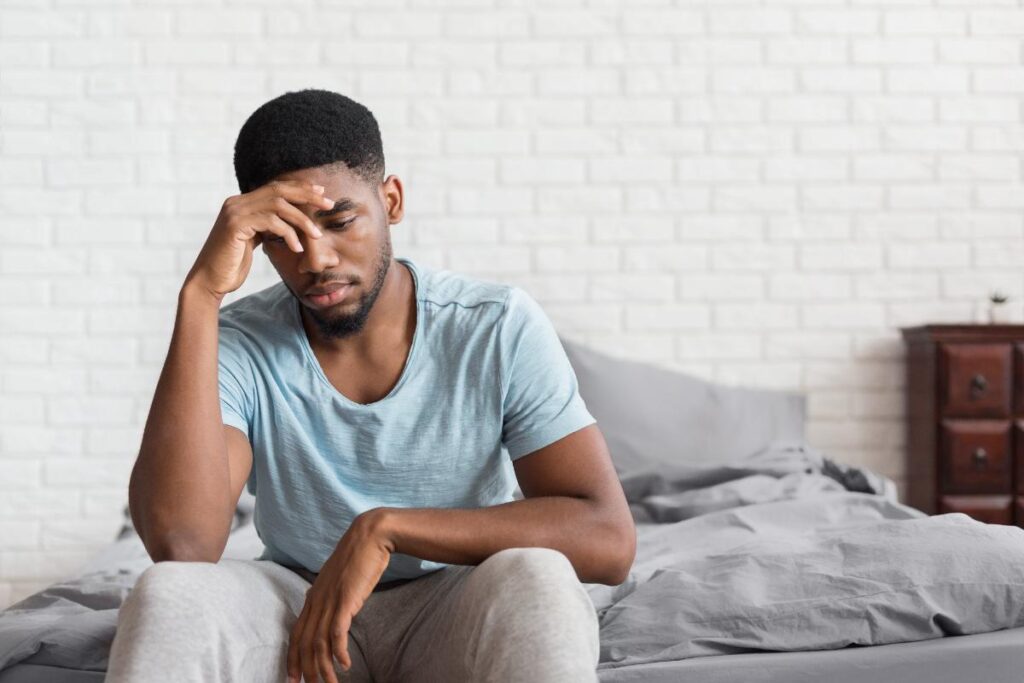What’s the difference between bipolar 1 and bipolar 2? These two conditions are closely related but have crucial differences between them. About 3.9% of the population has bipolar disorder over the course of their life. If you’re concerned about a loved one with bipolar disorder or want to learn more about treatment options, finding out the differences between bipolar 1 and bipolar 2 is a crucial step.
When you are ready to seek professional help, don’t hesitate to contact Promises Behavioral Health at 844.875.5609 for information about our personality disorder treatment center.
Bipolar Disorder Basics: Mania and Depression
Bipolar disorder is characterized by periods of mania and periods of depression. While most people go through some periods where they feel a bit happier or sadder than usual, in bipolar disorder, these differences are extreme and interfere with everyday life. Manic periods involve feeling very “up” or “high” and being much more active and talkative than usual.
People experiencing mania can get agitated and irritable, struggle to sleep, feel like their thoughts are racing, take risks, and feel like they can juggle a lot of tasks simultaneously.
Conversely, during periods of depression, the individual will often feel generally “down,” will sleep a lot more or less than usual, will feel lethargic, be forgetful, have trouble concentrating, will struggle to enjoy anything, and may feel “empty” inside.
Defining the Types of Bipolar Disorder
Bipolar 1 disorder is characterized by at least one episode of mania. These manic episodes are pretty extreme and may last a week or more, but some individuals may also have “mixed” episodes where they experience both mania and depression. Depressive episodes are common in bipolar 1, but not everyone has them. Bipolar 2 is defined as at least one episode of major depression and one episode of “hypomania.” This “hypomania” is similar to the mania experienced in bipolar 1 but isn’t as severe and could even go unnoticed in some cases. In contrast to mania, hypomania episodes are usually shorter, lasting a few days instead of a week.
Treating Bipolar 1 and 2
Treatment of bipolar disorder can take many forms but often includes medications like mood stabilizers and antidepressants, and psychotherapy. It can also involve lifestyle changes or other interventions. Treating bipolar 1 is essential because manic episodes usually involve risk-taking behavior spurred by impaired judgment. Depressive episodes carry the risk of suicide, so finding treatment can be life-saving. As long as they receive proper treatment, learn effective and healthy ways to cope with stress, and adjust their lifestyles as needed, people with bipolar disorder can live fulfilling, happy lives. The most important thing is to find support from a mental health professional as soon as possible.
When to Get Help
When a person’s bipolar disorder has taken over their life, making them a danger to themselves or others, it is time to intervene. Individuals with bipolar disorder or their loved ones tend to seek out mental health treatment when they are self-harming or having suicidal thoughts. If someone is self-harming or having a suicidal episode, they should be taken to an emergency room.
Treatment for bipolar disorder is typically lifelong and consists of therapies and medications. Extreme cases or episodes might require additional care or temporary hospitalization.
Promises Behavioral Health Can Help You Effectively Manage Bipolar Disorder
At Promises Behavioral Health, we offer treatment for a variety of mental health disorders, such as depression, anxiety, mood disorders, PTSD, personality disorders, and of course, bipolar disorder. Don’t wait to take back control of your life; we’re here to help. To inquire about your options or enroll in a treatment program, contact us at 844.875.5609.

